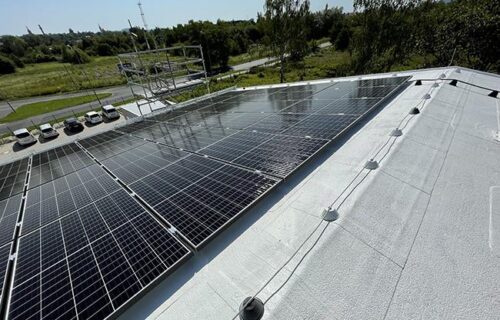Entrepreneurs from European Union countries are getting ready for winter restrictions in electricity supplies. Business is worrying about the reduced gas imports via Nord Stream 1 and the suspension of its transmission via the Yamal pipeline and crude oil via the Druzhba pipeline. In addition, from April this year. Poland introduced an embargo on Russian coal. If, due to the war in Ukraine, there is a reduction in electricity supply, entrepreneurs will be the first to feel it. Fortunately, winter is not yet here, and this gives companies a chance to prepare for the crisis.
Many companies are already analyzing the current electricity consumption in the context of the energy efficiency of their activities. There may be many reasons for the losses incurred, for example poor building insulation or the use of outdated technological lines that work in an ineffective manner and consume excessively electricity.
One thing is certain – for the unprepared, the coming crisis may affect the future of the company, and for the prudent, it may become an opportunity to build a competitive advantage.
Audit
The process of energy optimization, or even energy self-sufficiency, should start with the assessment of the condition of the facility and diagnosis of the problem. An energy audit will give you a clear picture of the building’s heat load and where the greatest losses occur. Thermomodernization of the facility will allow to minimize heat losses by up to several dozen percent. New generation windows, proper wall and roof insulation will mean that we will need less energy to heat the building than before. In industrial buildings, it is also important to effectively insulate external installations, which in turn will lead to an increase in the facility’s efficiency in terms of maintenance and operating costs.
Walls and roof
Thermal insulation of the facade and roof insulation are the basic steps to increase the building’s energy efficiency. In the case of already existing objects, methods of external wall protection are possible. Importantly – insulation is not only protection in winter. A protective layer properly selected for the type of building and material will generate savings in the summer season. This is especially true for the roof, which is the fastest-heating part of the building, which affects the air temperature inside the building. Can I protect my roof from the sun?
“We often forget that the roof should be protected not only against moisture caused by rain or snowfall,” says Jarosław Szalpuk from Selena ESG. “The condition of the roof is also strongly affected by UV rays. In addition, they reduce the thermal comfort of employees and the unfavorable working conditions of devices inside the building, which forces entrepreneurs to use air conditioning or cooling. The solution is to use an innovative COOL-R® reflective coating on the roof, which will significantly affect the cost of maintaining the company, reducing air conditioning expenses by up to 50%” adds Szalpuk.
DIY electricity
Once you’ve done an energy audit, you’ve properly insulated the walls and roof, it’s time to produce your own electricity. The installation of photovoltaic panels on office and production buildings is becoming a popular practice for companies that, in the era of rising energy prices, are looking for an effective way to reduce property maintenance costs, and thus allow them to join the global energy transformation process. On the other hand, storing energy from overproduction is a way to protect the company in the event of global destabilization of power sources.
“Photovoltaic panels, so far associated in Poland from small investments in private homes, are starting to enter large-format facilities more and more confidently,” says Wojciech Chył from Selena ESG. “However, it is important that the design of the installation and its implementation are entrusted to specialists, not only because of the long-term guarantees for materials. Hall buildings built over the last 20 years are designed according to strictly defined construction standards, primarily taking care of the investor’s economic account. For this reason, they do not leave a large margin on the roof load capacity. That is why a detailed analysis and precise estimation of the facility’s capabilities are of key importance,” Chył adds.
Culture of energy consumption
In the process of change, we often overlook the obvious. Did you know that LED bulbs consume 80% less electricity than traditional ones? So if you don’t have them in your company yet, don’t delay it any longer. Remember that traditional light bulbs use up to 95% of the electricity they consume only to emit thermal energy, and only 5% for lighting.
In addition to the segregation of waste which is more and more obvious to us – introduce a culture of saving electricity in your company. Not only with business in mind, but also with the environment in mind. Disconnecting unused devices from power, turning off the lights in empty rooms and other “small” steps in total give big effects that have an impact for all of us.
Author: Selena ESG
